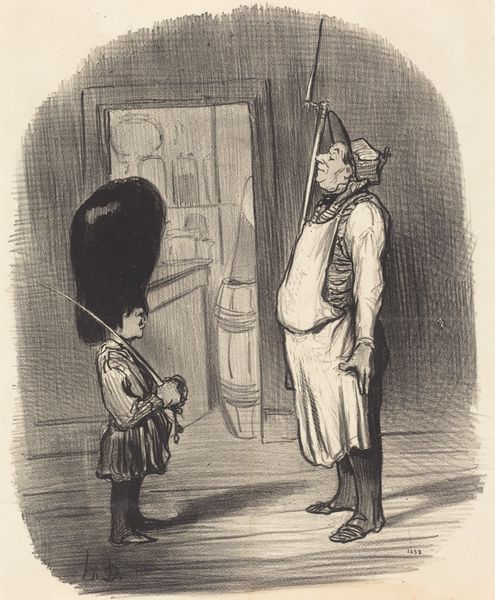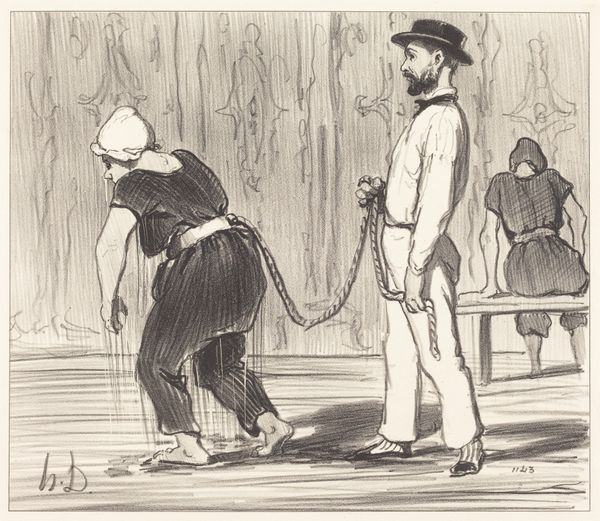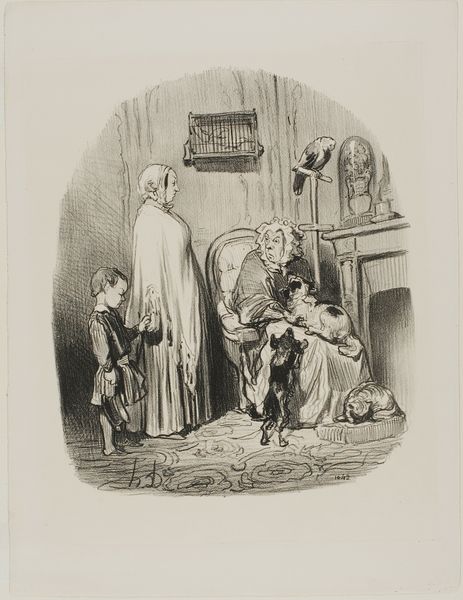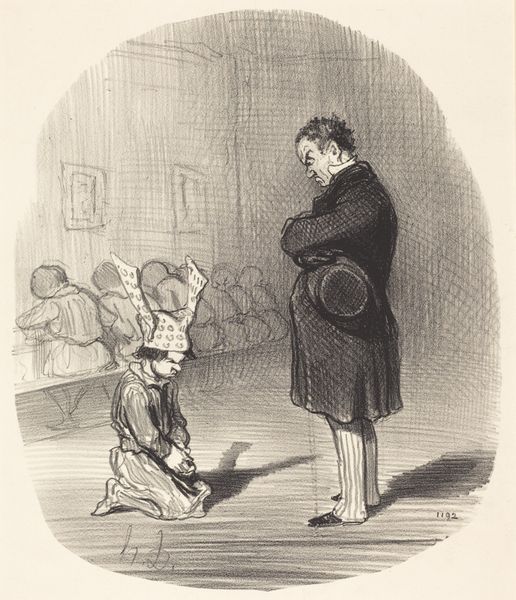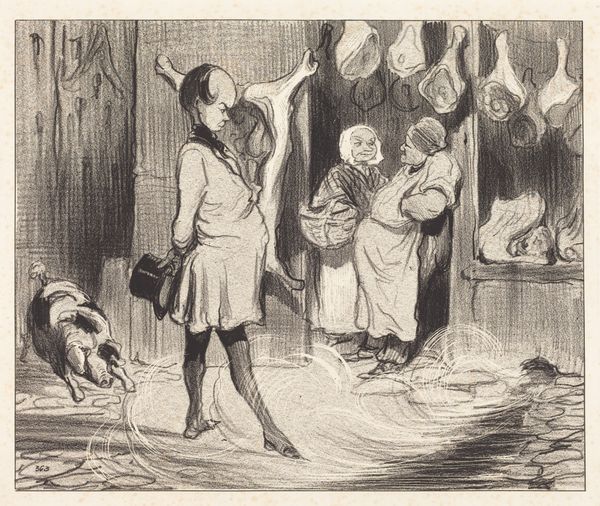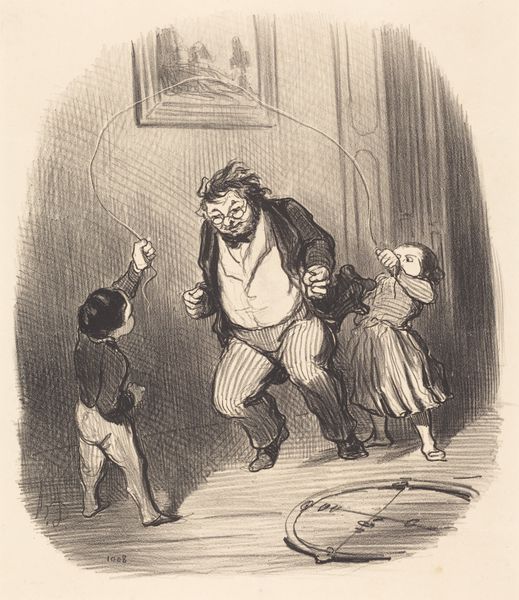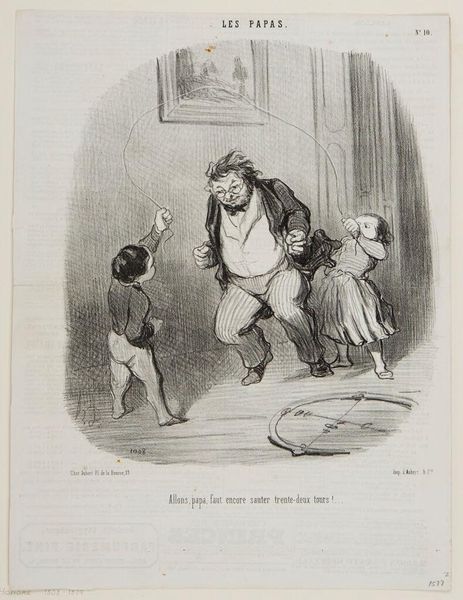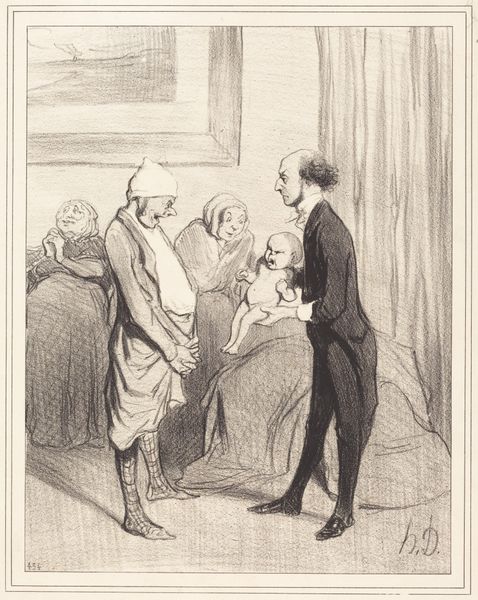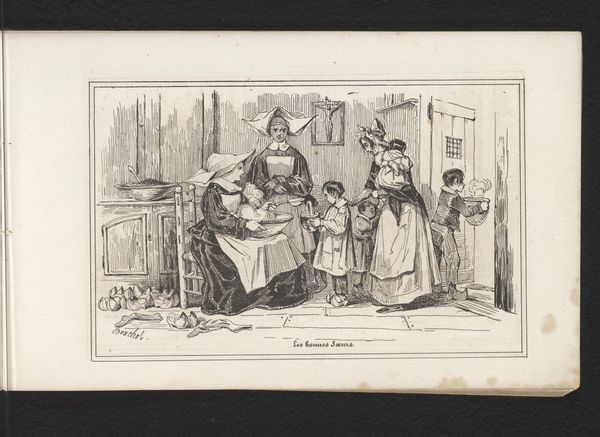
lithograph, print
#
portrait
#
lithograph
# print
#
genre-painting
#
realism
Copyright: National Gallery of Art: CC0 1.0
Editor: This is "En Famille," from 1847, by Honoré Daumier, made using lithography, so it’s a print. It has a kind of ordinary, everyday feel to it. It really seems to capture a fleeting moment in time, of working-class families, like they were just caught off-guard. What's your take on this piece? Curator: Considering this lithograph, I’m drawn to consider Daumier’s production methods and their cultural context. Think about it – lithography democratized art. The use of this printmaking process allowed Daumier to create multiples, making his work accessible to a broader audience beyond the traditional art market. Editor: So, its distribution becomes part of its meaning? Curator: Exactly. It's not just about depicting a family; it's about how that depiction circulated within society. And we must consider his choice to depict a common, likely working-class family. What materials do we *not* see depicted? Rich fabrics, precious jewels, symbols of power – these are absent. The lithographic process mirrors the life of labor Daumier portrays, through reproduction for mass consumption. What impact might have his artistic choices have had? Editor: That's such an interesting point – the choice of material and process amplifying the message itself. I hadn't considered the way it allows access. It reframes my view on Daumier's intention behind portraying everyday families! I suppose the next question is what could we learn about labor and materiality from his other pieces, and those of his contemporaries? Curator: Precisely. By focusing on Daumier’s chosen production and modes of disseminating artwork, this ordinary moment reveals a much broader dialogue regarding labor, social class, and the means of artistic creation.
Comments
No comments
Be the first to comment and join the conversation on the ultimate creative platform.
